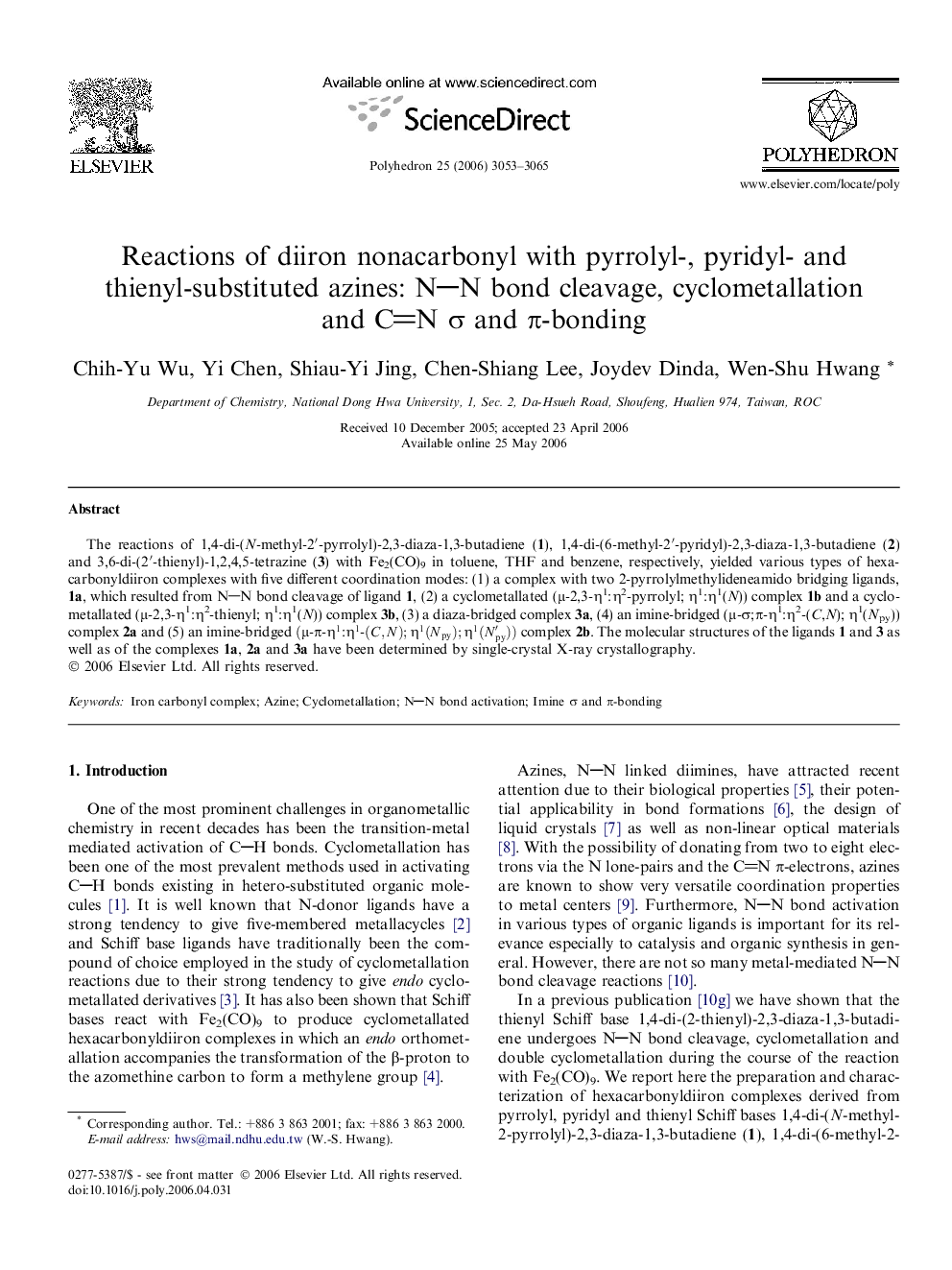| Article ID | Journal | Published Year | Pages | File Type |
|---|---|---|---|---|
| 1335654 | Polyhedron | 2006 | 13 Pages |
The reactions of 1,4-di-(N-methyl-2′-pyrrolyl)-2,3-diaza-1,3-butadiene (1), 1,4-di-(6-methyl-2′-pyridyl)-2,3-diaza-1,3-butadiene (2) and 3,6-di-(2′-thienyl)-1,2,4,5-tetrazine (3) with Fe2(CO)9 in toluene, THF and benzene, respectively, yielded various types of hexacarbonyldiiron complexes with five different coordination modes: (1) a complex with two 2-pyrrolylmethylideneamido bridging ligands, 1a, which resulted from NN bond cleavage of ligand 1, (2) a cyclometallated (μ-2,3-η1:η2-pyrrolyl; η1:η1(N)) complex 1b and a cyclometallated (μ-2,3-η1:η2-thienyl; η1:η1(N)) complex 3b, (3) a diaza-bridged complex 3a, (4) an imine-bridged (μ-σ;π-η1:η2-(C,N); η1(Npy)) complex 2a and (5) an imine-bridged (μ-π-η1:η1-(C,N);η1(Npy);η1(Npy′)) complex 2b. The molecular structures of the ligands 1 and 3 as well as of the complexes 1a, 2a and 3a have been determined by single-crystal X-ray crystallography.
Graphical abstractThe reactions of pyrrolyl, pyridyl and thienyl azines with Fe2(CO)9 yielded various types of diironhexacarbonyl complexes with different coordination modes, which resulted from (1) NN bond cleavage, (2) cyclometallation, (3) diaza-bridge coordination, (4) σ- and π-imine bridge coordination and (5) π-imine bridge coordination of the ligand.Figure optionsDownload full-size imageDownload as PowerPoint slide
